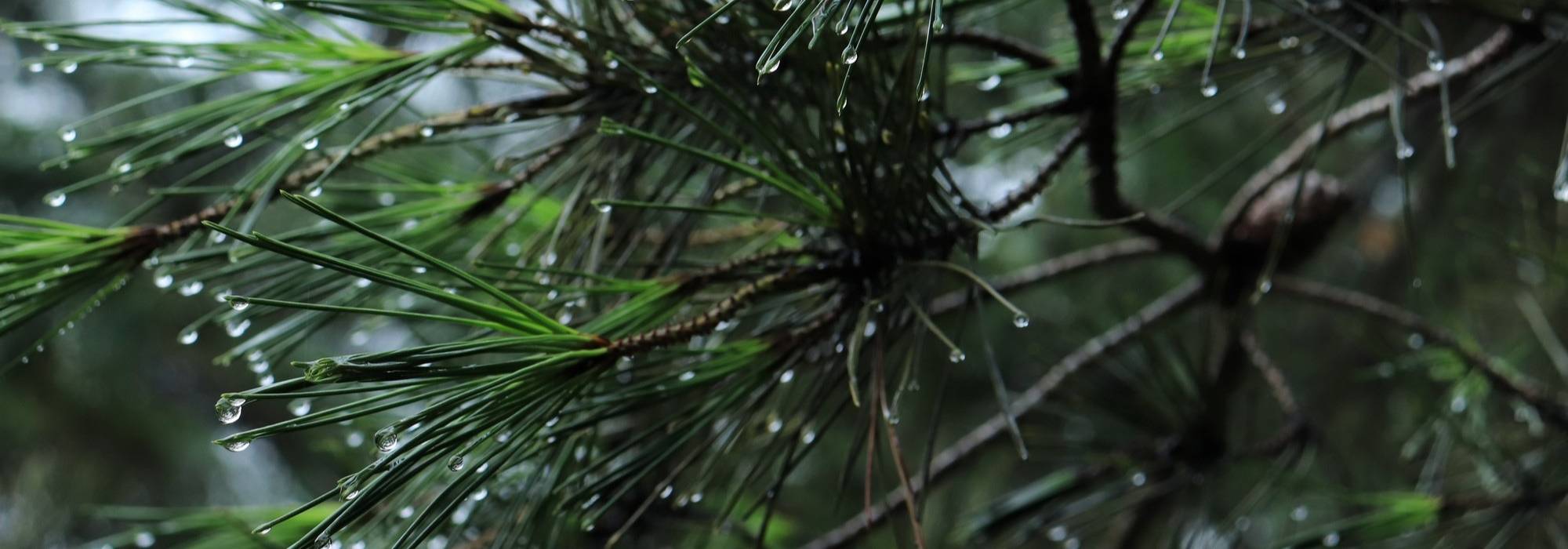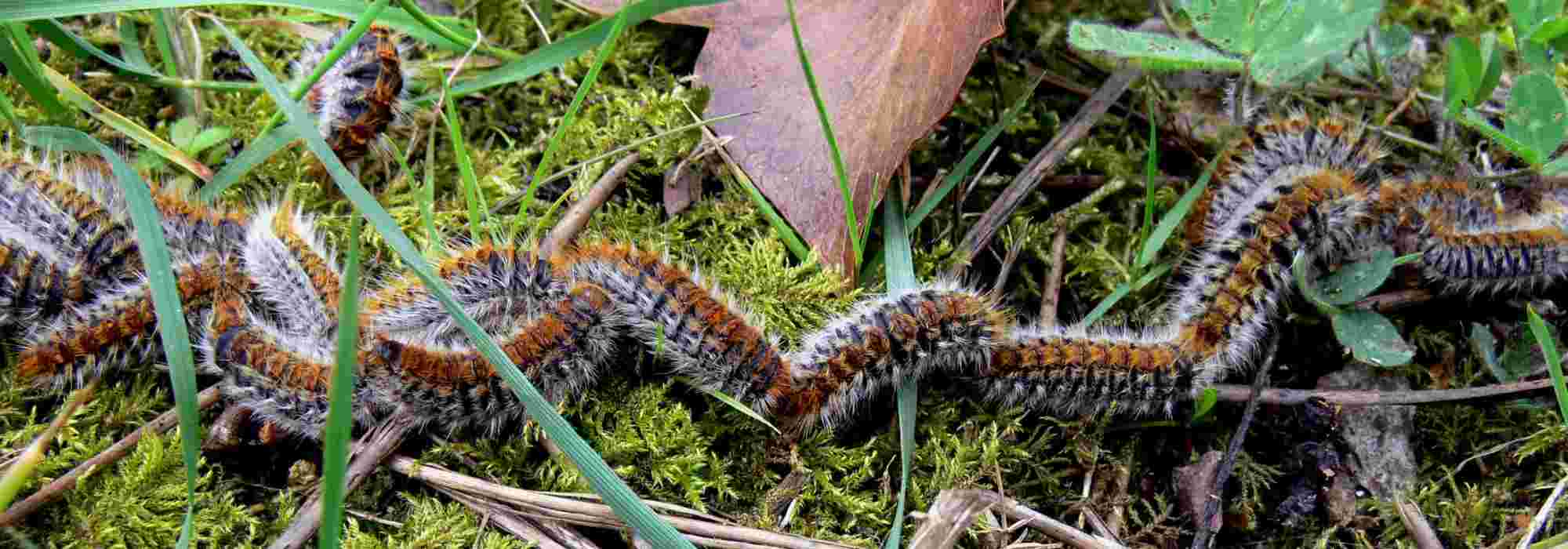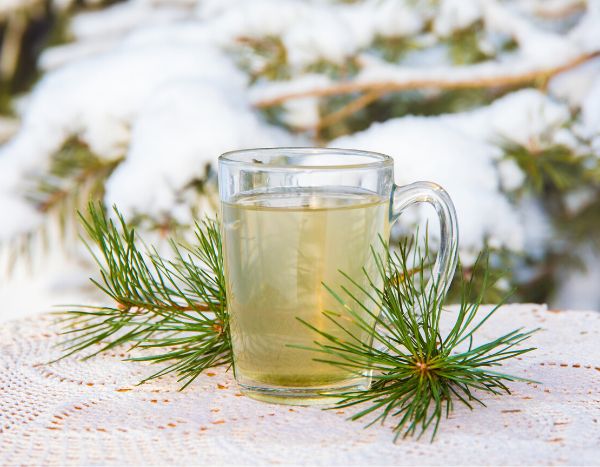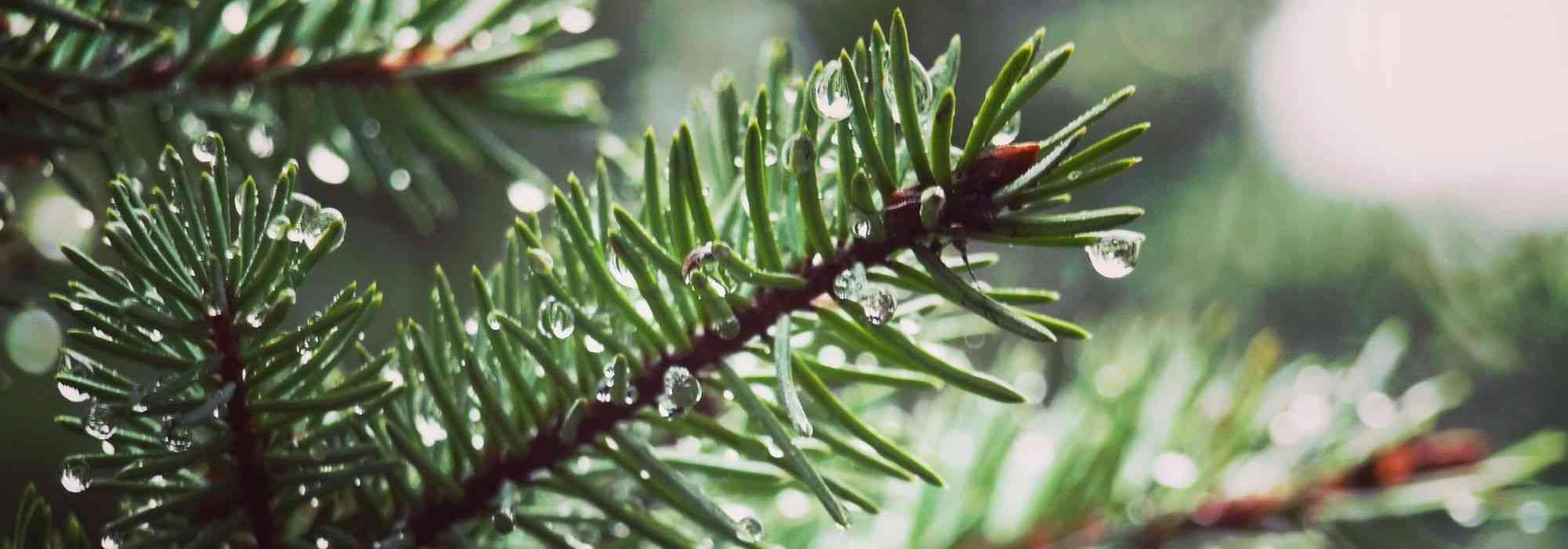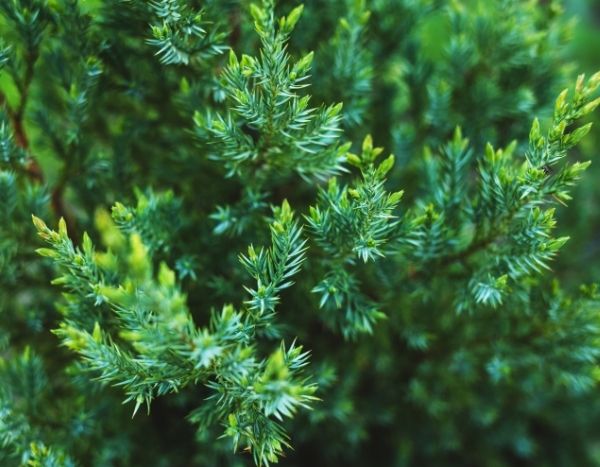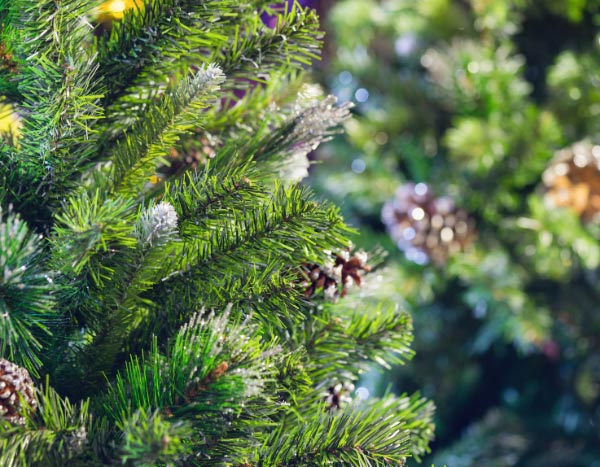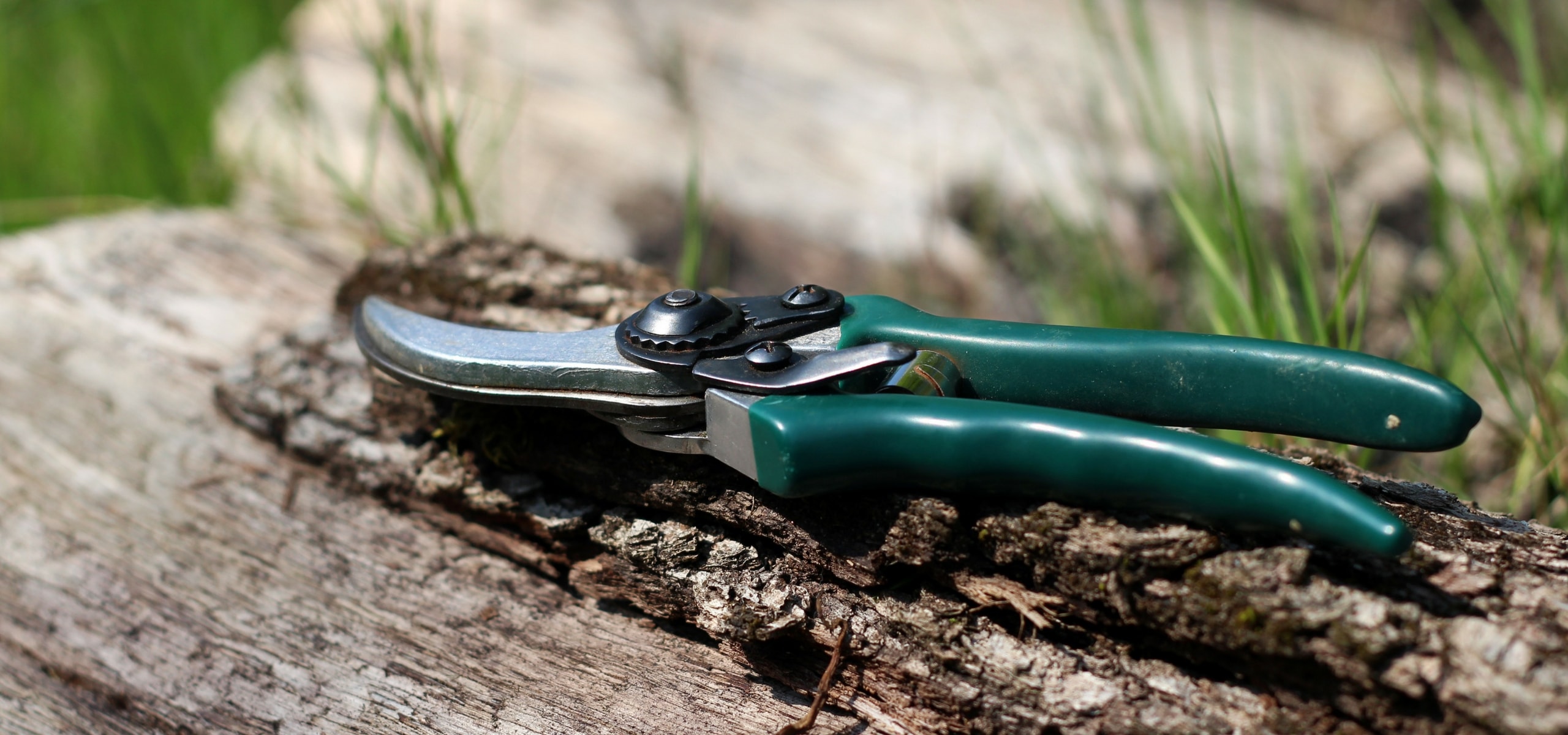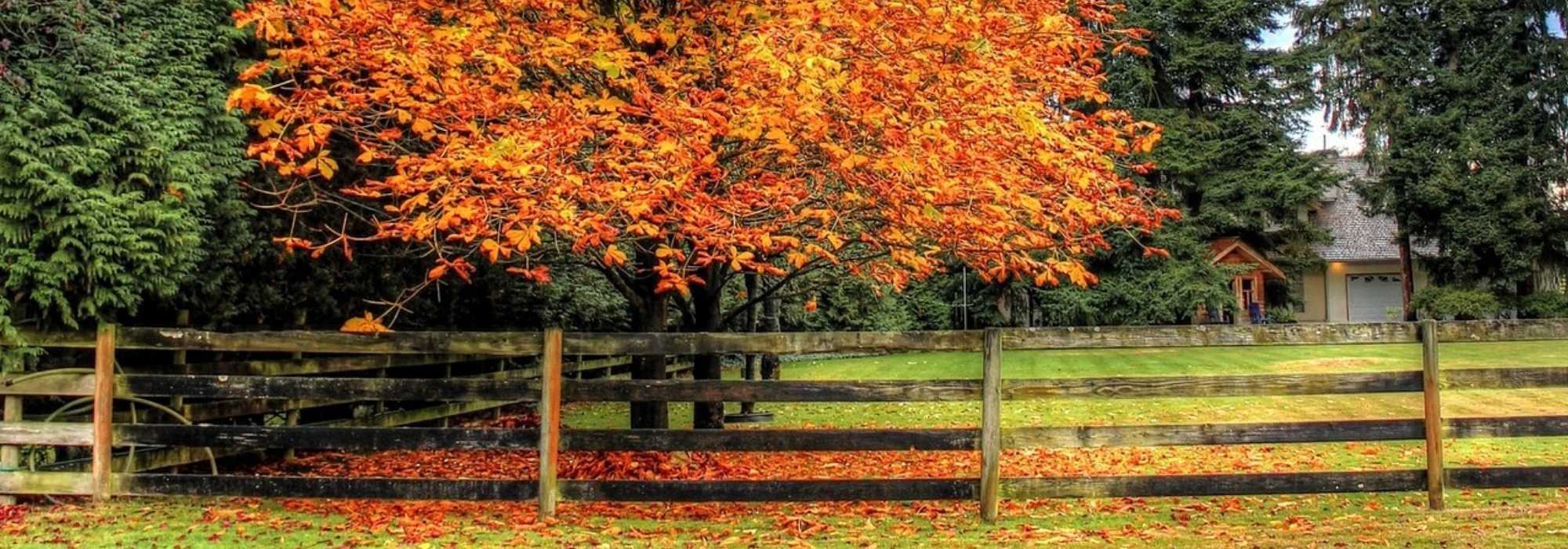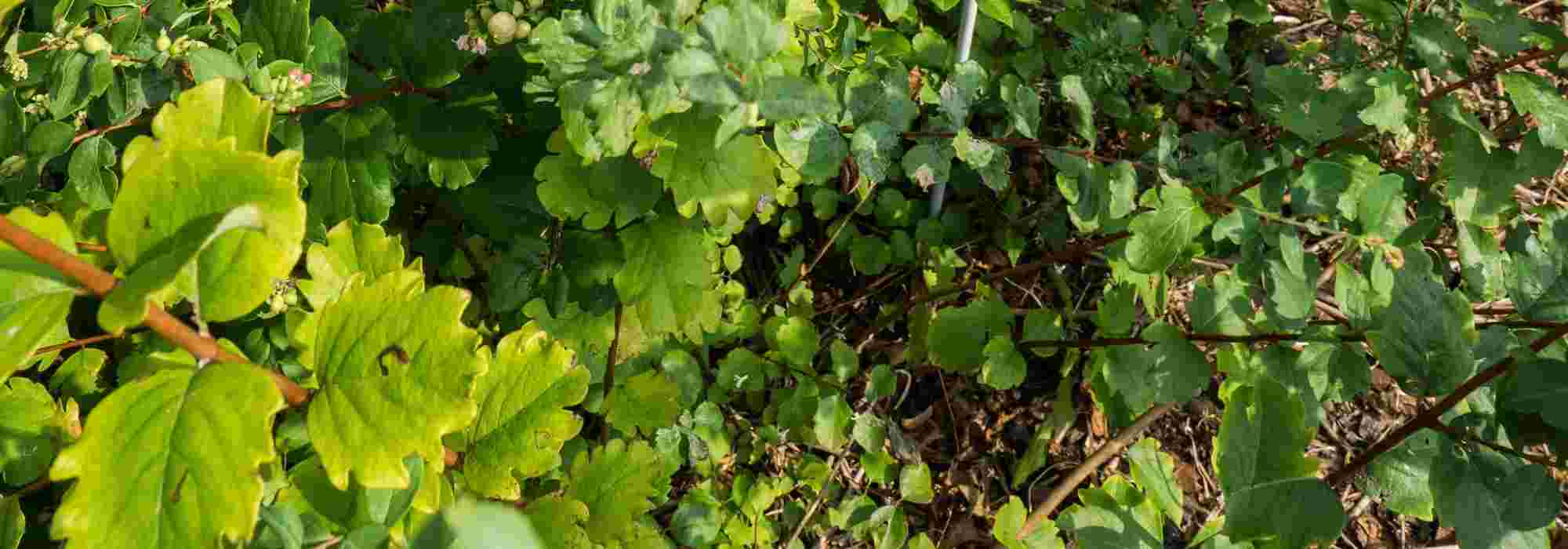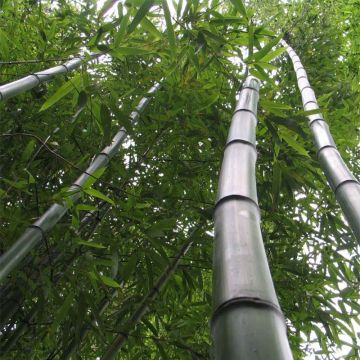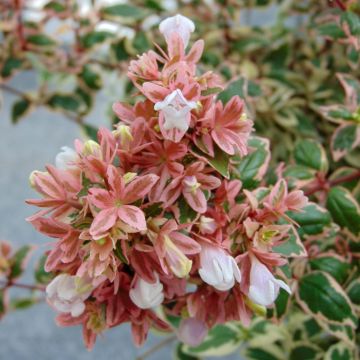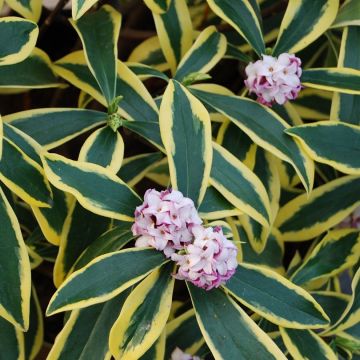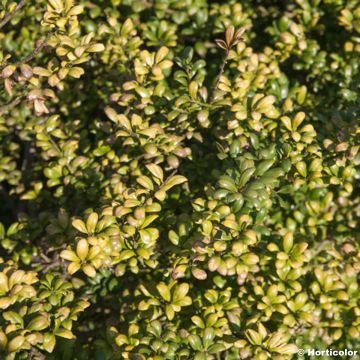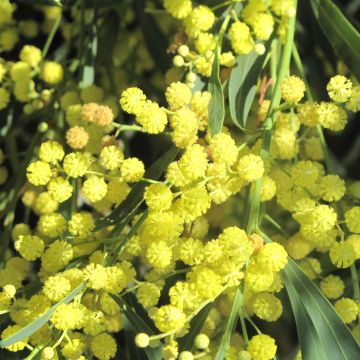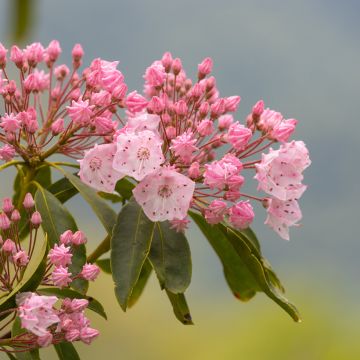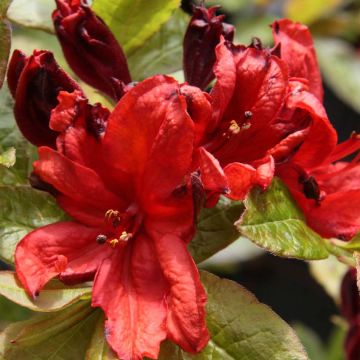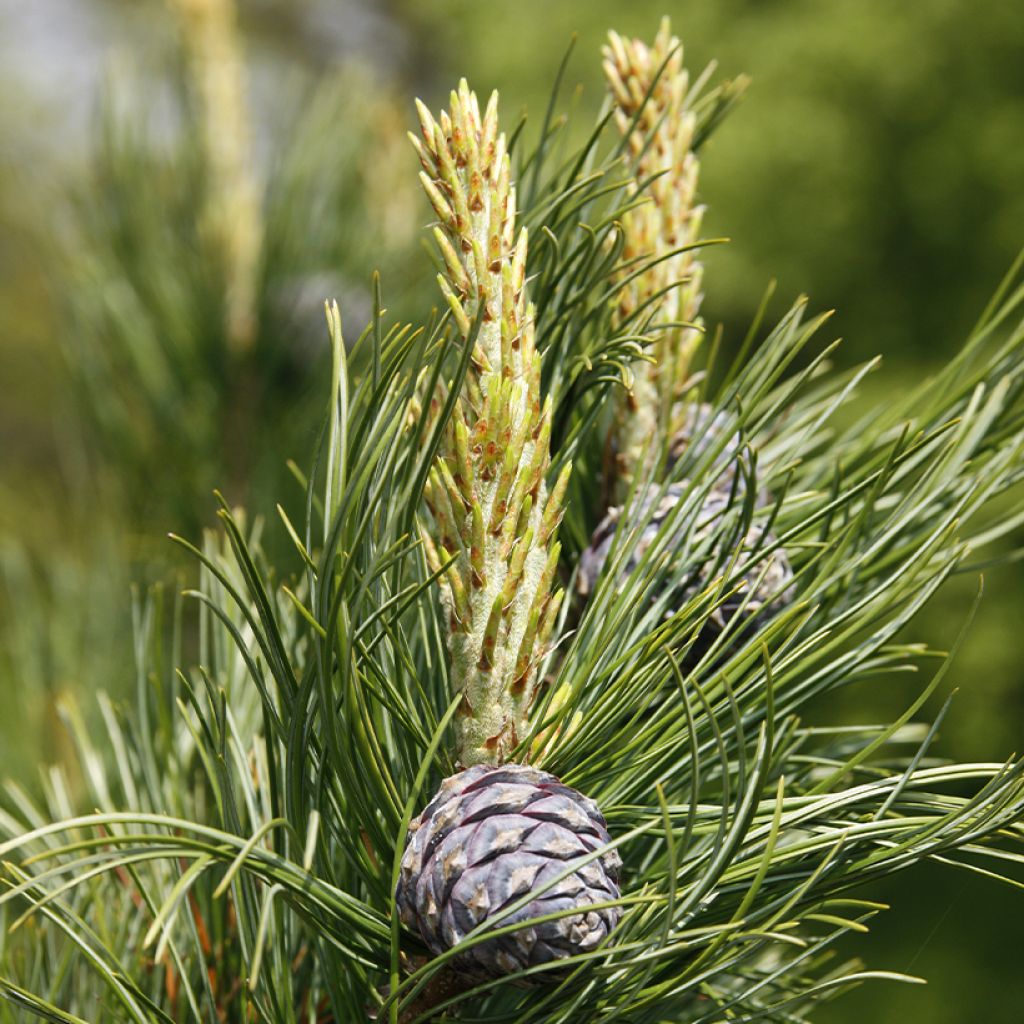

Pinus cembra - Arolla pine, Swiss stone pine
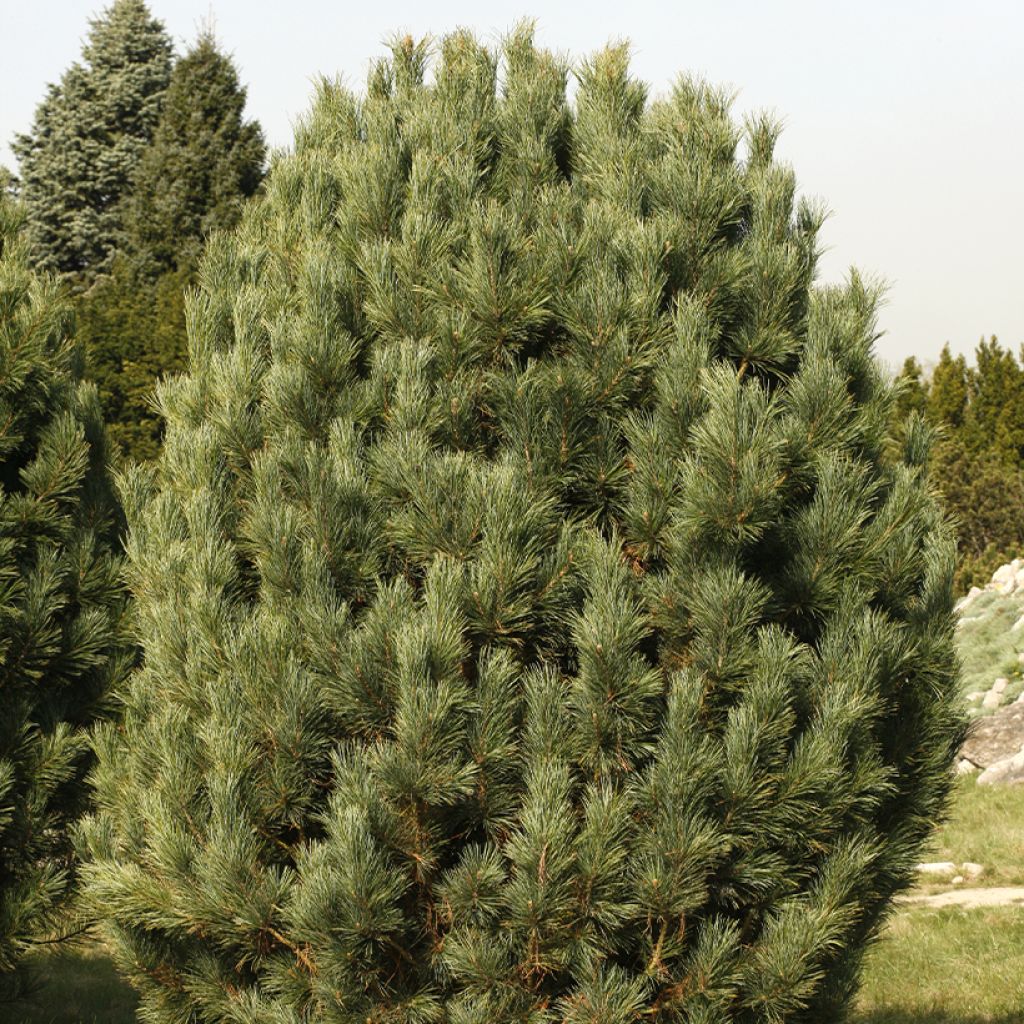

Pinus cembra - Arolla pine, Swiss stone pine
Pinus cembra - Swiss stone pine
Pinus cembra
Arolla pine, Russian cedar, Siberian cedar, Siberian cedar pine, Swiss stone pine
Special offer!
Receive a €20 voucher for any order over €90 (excluding delivery costs, credit notes, and plastic-free options)!
1- Add your favorite plants to your cart.
2- Once you have reached €90, confirm your order (you can even choose the delivery date!).
3- As soon as your order is shipped, you will receive an email containing your voucher code, valid for 3 months (90 days).
Your voucher is unique and can only be used once, for any order with a minimum value of €20, excluding delivery costs.
Can be combined with other current offers, non-divisible and non-refundable.
Home or relay delivery (depending on size and destination)
Schedule delivery date,
and select date in basket
This plant carries a 24 months recovery warranty
More information
We guarantee the quality of our plants for a full growing cycle, and will replace at our expense any plant that fails to recover under normal climatic and planting conditions.
Would this plant suit my garden?
Set up your Plantfit profile →
Description
Pinus cembra, the Arolla Pine or Swiss Stone Pine, is a medium-sized conifer known for its hardiness and longevity. Native to the alpine and subalpine regions of Europe, this pine is particularly valued for its ability to withstand harsh winters. It has a conical and slender silhouette that broadens with age. It is also recognisable by its blue-green needles, grouped in fives, and its stout purple cones that turn brown-grey. Due to its considerable size, it is best suited to large gardens, especially in mountain areas.
The Swiss Stone Pine is sometimes called arolla, arole, arve, auvier, or tinier. It is a conifer of the Pinaceae family, native to the high mountains of Europe and Central Asia. It can only grow between 1,700 and 2,400 metres in altitude, in climates with long and particularly severe winters. This is a very hardy species, reaching over 20 metres in height in Europe and up to 40 metres in Asia, with a narrow conical habit and fastigiate branches. In cultivation, it typically reaches an average height of 15 metres. This pine adapts well to urban conditions. Pinus cembra exhibits a relatively slow growth rate, around 10 to 20 cm per year. This slowness contributes to its exceptional longevity, with some specimens living up to 1,000 years. In its early years, it displays a narrow, upright, pyramidal habit. Over time, its crown broadens, its top flattens, and its branches droop slightly, often forming secondary crowns. When given space, its lower branches remain dense. Its initially smooth and greyish-green bark darkens and becomes channelled with age. Young shoots are felted and yellowish-brown, later turning orange-brown. The stiff, glaucous, upright needles are grouped in fives and measure between 5 and 9 cm in length. Cones appear after 7-8 years of growth. Male cones are carmine-red, while young female cones are rosy-violet. The latter are ovoid, stout, brown-grey in colour, and covered with large, flattened scales. They measure 5 to 8 cm long and 4 to 5 cm wide. These cones fall without opening in their first year.
In the garden, the Swiss Stone Pine is perfect for creating windbreaks or planted in small groups. It thrives in well-drained, slightly acidic soils and appreciates cold winters. Its wood, renowned for its quality and pleasant aroma, can be used in carpentry and sculpture. Whether as a standalone specimen or in groups, this elegant pine makes a striking landscape feature while requiring minimal maintenance once established. To complement the Swiss Stone Pine in an alpine garden, consider pairing it with Norway Spruce (Picea abies), another conifer native to mountainous regions, Creeping Juniper (Juniperus horizontalis 'Prostrata') to cover the ground around its base, and Rhododendron (x) catawbiense Grandiflorum, an evergreen bush with pink summer flowers. This variety tolerates acidic soils and cold climates well.
Pinus cembra - Swiss stone pine in pictures
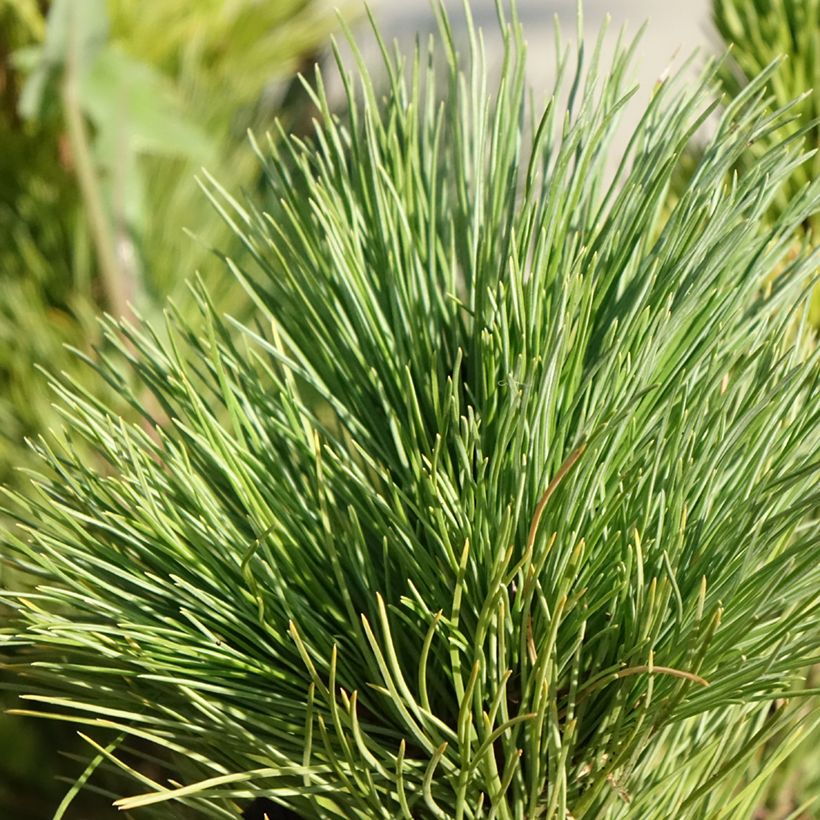

Plant habit
Flowering
Foliage
Botanical data
Pinus
cembra
Pinaceae
Arolla pine, Russian cedar, Siberian cedar, Siberian cedar pine, Swiss stone pine
Central Europe
Planting and care
Plant Pinus cembra from October to November and from February to May in well-drained, moist to dry soil, preferably fertile and tending towards acidic, even very acidic. A sandy, humus-bearing or loamy soil will be perfectly suitable. Choose a sunny spot. Soak the root balls thoroughly before planting. Add organic matter at planting time and water generously during the first few years, as well as during prolonged dry spells. Apply a special conifer fertiliser every year in April and hoe the soil in summer. This hardy conifer (withstanding at least -20°C) can tolerate temporary drought once well established.
Planting period
Intended location
Care
Planting & care advice
This item has not been reviewed yet - be the first to leave a review about it.
Similar products
Haven't found what you were looking for?
Hardiness is the lowest winter temperature a plant can endure without suffering serious damage or even dying. However, hardiness is affected by location (a sheltered area, such as a patio), protection (winter cover) and soil type (hardiness is improved by well-drained soil).

Photo Sharing Terms & Conditions
In order to encourage gardeners to interact and share their experiences, Promesse de fleurs offers various media enabling content to be uploaded onto its Site - in particular via the ‘Photo sharing’ module.
The User agrees to refrain from:
- Posting any content that is illegal, prejudicial, insulting, racist, inciteful to hatred, revisionist, contrary to public decency, that infringes on privacy or on the privacy rights of third parties, in particular the publicity rights of persons and goods, intellectual property rights, or the right to privacy.
- Submitting content on behalf of a third party;
- Impersonate the identity of a third party and/or publish any personal information about a third party;
In general, the User undertakes to refrain from any unethical behaviour.
All Content (in particular text, comments, files, images, photos, videos, creative works, etc.), which may be subject to property or intellectual property rights, image or other private rights, shall remain the property of the User, subject to the limited rights granted by the terms of the licence granted by Promesse de fleurs as stated below. Users are at liberty to publish or not to publish such Content on the Site, notably via the ‘Photo Sharing’ facility, and accept that this Content shall be made public and freely accessible, notably on the Internet.
Users further acknowledge, undertake to have ,and guarantee that they hold all necessary rights and permissions to publish such material on the Site, in particular with regard to the legislation in force pertaining to any privacy, property, intellectual property, image, or contractual rights, or rights of any other nature. By publishing such Content on the Site, Users acknowledge accepting full liability as publishers of the Content within the meaning of the law, and grant Promesse de fleurs, free of charge, an inclusive, worldwide licence for the said Content for the entire duration of its publication, including all reproduction, representation, up/downloading, displaying, performing, transmission, and storage rights.
Users also grant permission for their name to be linked to the Content and accept that this link may not always be made available.
By engaging in posting material, Users consent to their Content becoming automatically accessible on the Internet, in particular on other sites and/or blogs and/or web pages of the Promesse de fleurs site, including in particular social pages and the Promesse de fleurs catalogue.
Users may secure the removal of entrusted content free of charge by issuing a simple request via our contact form.
The flowering period indicated on our website applies to countries and regions located in USDA zone 8 (France, the United Kingdom, Ireland, the Netherlands, etc.)
It will vary according to where you live:
- In zones 9 to 10 (Italy, Spain, Greece, etc.), flowering will occur about 2 to 4 weeks earlier.
- In zones 6 to 7 (Germany, Poland, Slovenia, and lower mountainous regions), flowering will be delayed by 2 to 3 weeks.
- In zone 5 (Central Europe, Scandinavia), blooming will be delayed by 3 to 5 weeks.
In temperate climates, pruning of spring-flowering shrubs (forsythia, spireas, etc.) should be done just after flowering.
Pruning of summer-flowering shrubs (Indian Lilac, Perovskia, etc.) can be done in winter or spring.
In cold regions as well as with frost-sensitive plants, avoid pruning too early when severe frosts may still occur.
The planting period indicated on our website applies to countries and regions located in USDA zone 8 (France, United Kingdom, Ireland, Netherlands).
It will vary according to where you live:
- In Mediterranean zones (Marseille, Madrid, Milan, etc.), autumn and winter are the best planting periods.
- In continental zones (Strasbourg, Munich, Vienna, etc.), delay planting by 2 to 3 weeks in spring and bring it forward by 2 to 4 weeks in autumn.
- In mountainous regions (the Alps, Pyrenees, Carpathians, etc.), it is best to plant in late spring (May-June) or late summer (August-September).
The harvesting period indicated on our website applies to countries and regions in USDA zone 8 (France, England, Ireland, the Netherlands).
In colder areas (Scandinavia, Poland, Austria...) fruit and vegetable harvests are likely to be delayed by 3-4 weeks.
In warmer areas (Italy, Spain, Greece, etc.), harvesting will probably take place earlier, depending on weather conditions.
The sowing periods indicated on our website apply to countries and regions within USDA Zone 8 (France, UK, Ireland, Netherlands).
In colder areas (Scandinavia, Poland, Austria...), delay any outdoor sowing by 3-4 weeks, or sow under glass.
In warmer climes (Italy, Spain, Greece, etc.), bring outdoor sowing forward by a few weeks.


































